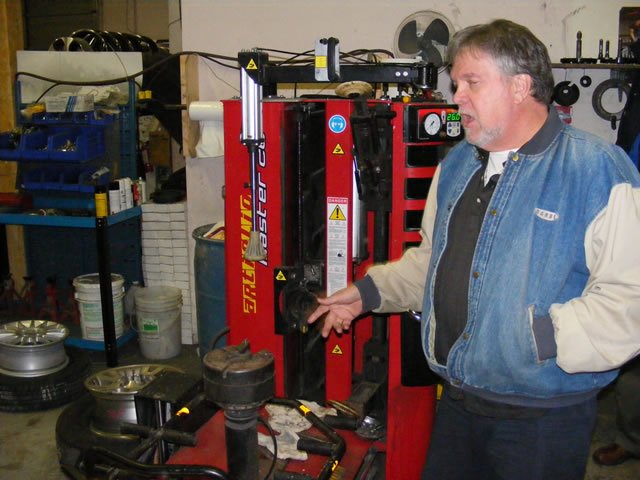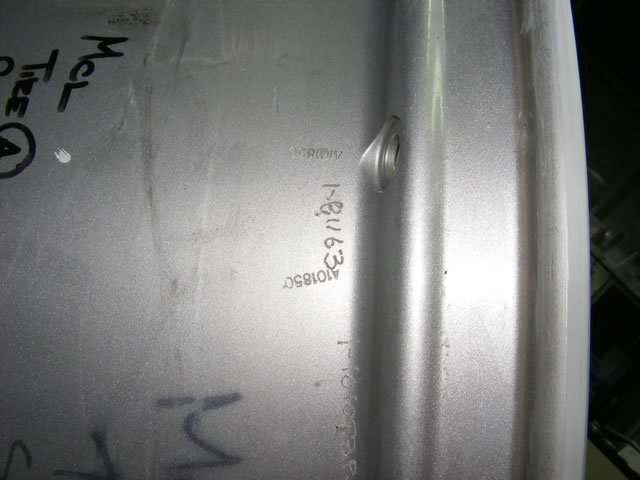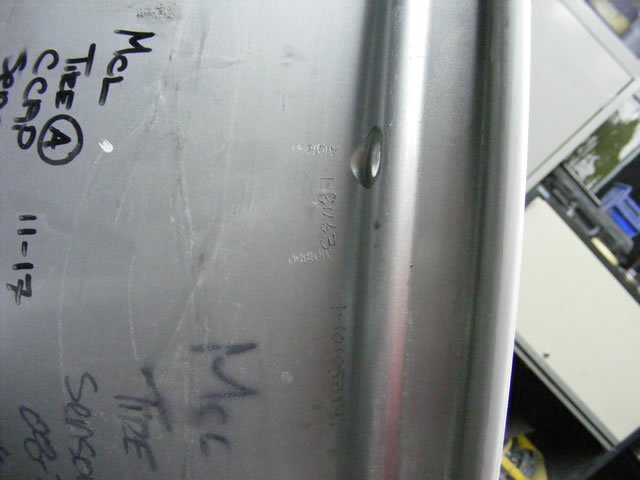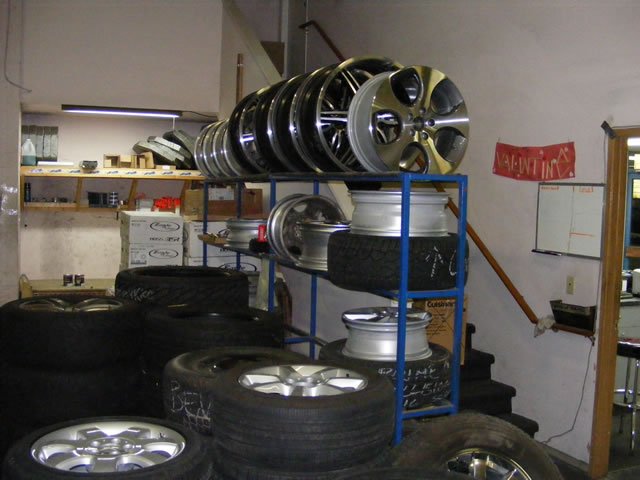Aluminum Wheel Repair and Refinishing
November 17, 2010
When: 6:30 PM Wednesday Nov. 17, 2010
Where: Panther Precision Machine. at 8116 130 Street Surrey, BC, V3W 8J9, 604-599-1542
This report has been prepared from comprehensive notes taken by John Cripps and
Cam Finnigan. From a personal perspective I have attended several technical
sessions arranged by the Volvo Club, all of them have been excellent, being
both interesting and informative. These things don't just happen, thanks are
due to the Club members who organize these events and to the establishments and
personnel who commit their time to put on these sessions. We can thank John
Cripps for organizing this session. The turn out of Club members for this
session was a bit disappointing being only about ten. These events deserve your
support and it is hoped for better attendance at future events.
Presentation by Paul Levasseur
Paul provided his personal background in the automotive refinishing supplies business and as sales representative for Standox paint which is the paint used by manufacturers of a number of high-end automobiles. Panther Precision Machine was one of Paul's customers and that is how he got involved with the business. They operate a very “green” shop, examples being the recycling the wash-water through distillation and the use of water-based paint. Also all the metal swarf and scrap is collected for recycling. Their business is one of a very small number that repair alloy wheels. They have a delivery truck whose range is Chilliwack to Lions Bay and the border to the mountains. They won’t service residences, but will pick and deliver to businesses. In the States it is more usual to replace wheels rather than repair them. Quite a bit of Panther Machine's business is repairing and refinishing wheels for customers in the States. The most common form of damage is “curb rash” caused by wheels having rubbed against curbs or other surfaces. Truck wheels where the bead is worn away due to tire chaffing is one of the more extreme forms of damage, these wheels require considerable welding to build up the bead.Paul then gave a tour of the facility explaining the various steps of the process:
1. The first step is removal of the tire which is done by a high-tech Italian machine which virtually does everything but serve espresso. This machine when operated by their skillful technician ensures no damage to the wheel when removing and mounting tires. Paul told us that they have a steady business repairing damage caused by tire shops using old-fashioned equipment and careless operators.2. The wheel is then inspected and marked with a damage code on a scale 1 to 9. The higher the number the more damage and more repair work required. It was noted that cracks in the hub at bolt holes and in spokes can not be repaired. No welding is allowed on spokes.
3. Wheels are then washed to remove road grime and brake dust.
4. Straightening, if required, is carried out using equipment ranging from hand tools to the “monster” which is somewhat similar to the Italian tire machine. The wheel is held in a fixture and arms and cylinders swing into place to straighten the wheel. They can straighten wheels to closer tolerances than the original.
5. Damaged areas are built up using aluminum TIG welding. This requires tremendous skill. Some distortion can occur due to the heat and some subsequent straightening may be required.
6. Following welding the wheel is mounted in a lathe to trim excess
material. They have 4 lathes including a high tech computer controlled CNC
lathe made by Lehigh.
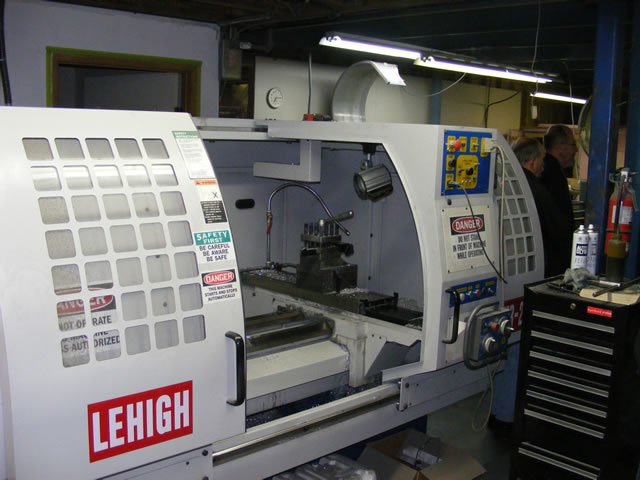
7. The wheels are then prepared for painting using walnut and plastic media-blasting to remove corrosion.
8. Some wheels have some sharp edges to which paint will not adhere so these surfaces are sanded.
9. When the repair is complete the wheel is stamped on the tire side of the rim near the valve. This identifies the shop that did the work and how many times the wheel has been repaired.
10. Painting consists of an epoxy primer on bare metal followed by a water borne urethane top coat and a final clear coat.
11. Polishing completes the process.
Some customers will bring their wheels in just to change colours. A few years ago bronze was popular, right now, flat black is the in colour!
Throughout the tour Paul explained each process in detail and with enthusiasm and pride in the quality of their work. He credited this to having a team highly skilled, long term employees. As examples; Norman the tire machine wizard; Alfie's aluminum welding skills and Paul's son, Cody, who does the painting. Quality work is only possible with the right equipment and skilled operators. Paul warned about mobile wheel repair. They may use a plastic composite filler and a spray can to paint over the top.
In addition to custom work Panther Machine carries a large stock of wheels that have been repaired and can be purchased off the shelf.
Prices
Costs obviously depend on the amount of work required. Straightening a wheel costs from $100 to $150 and a complete repair and refinish $175 to $260. Prices for more severely damaged wheels rated code 9 are quoted on an individual basis.Volvo Club Discount
Paul offered members of the Club a 20% discount for the next 90 days (to Feb 15th 2011) on wheel repairs and mounting and balancing. Also a discount on tires. See more at their web site Panther Precision Machine.At the end of the session, John Cripps presented Paul with a plaque as a token of appreciation for a most interesting presentation.

